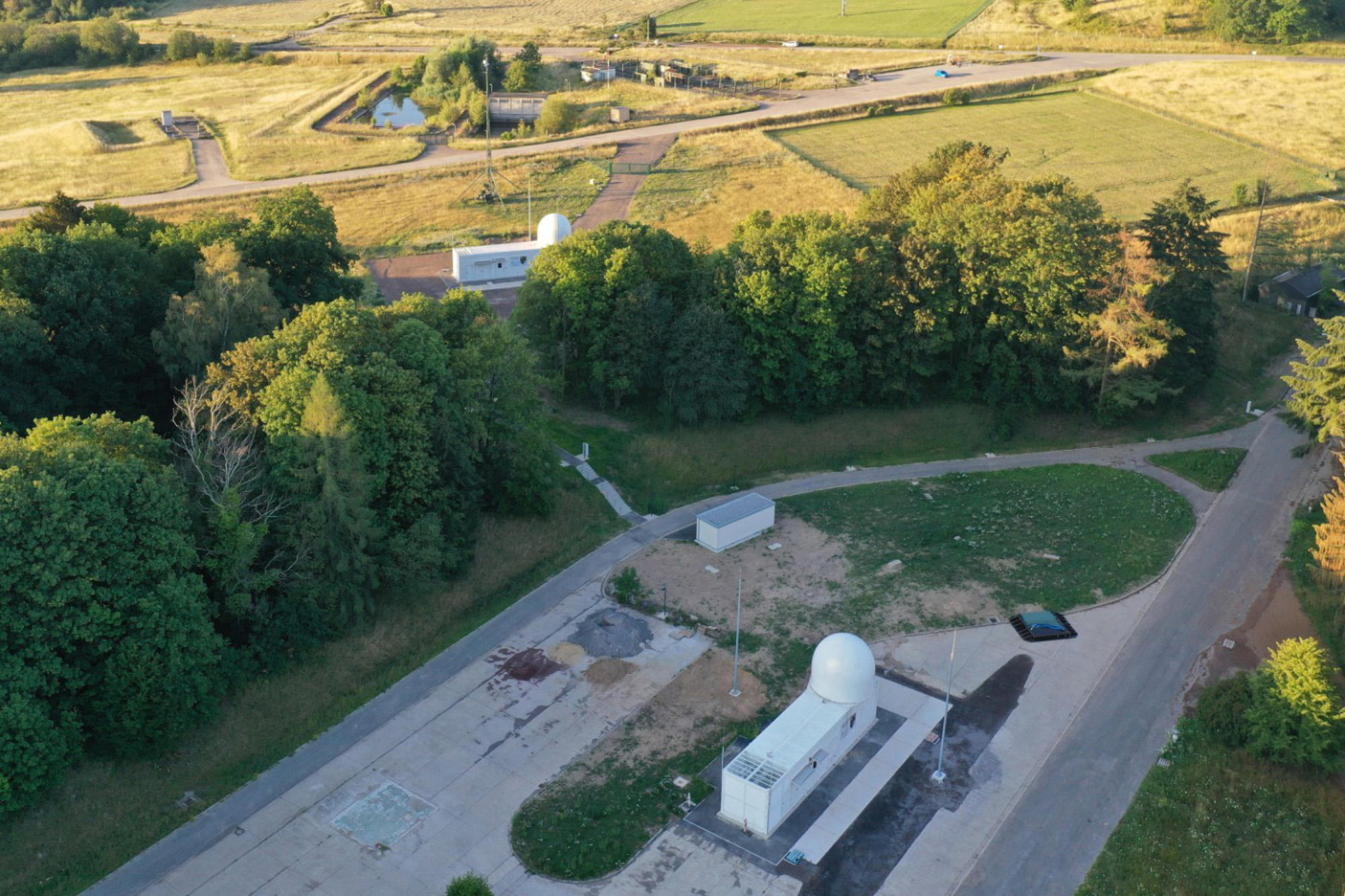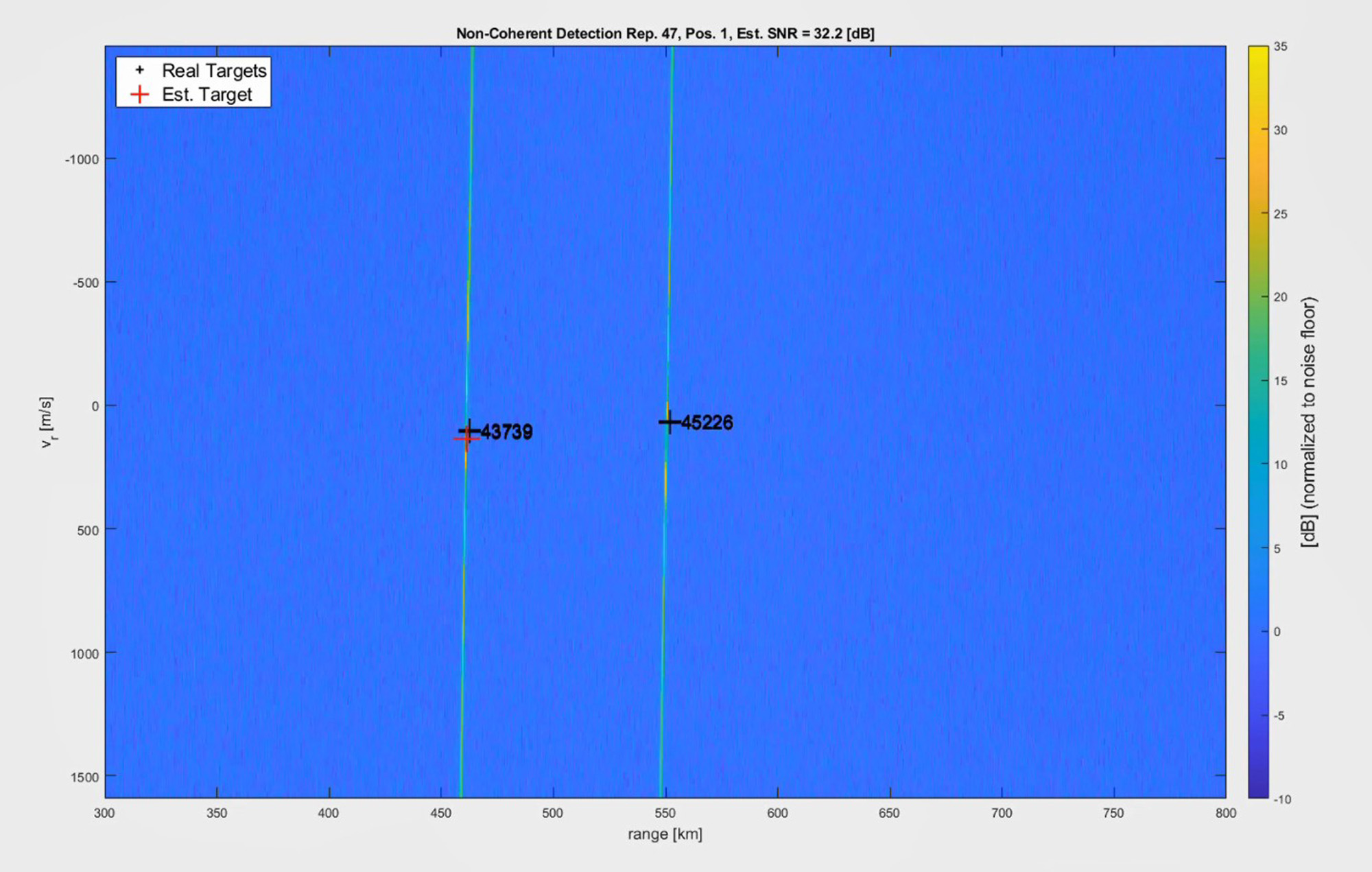»Baptism of fire« of the space surveillance radar GESTRA


The task of the space surveillance radar GESTRA from Fraunhofer FHR: observe space debris and provide the data for its cataloging. Initial series of measurements have been promising.
At first glance, there is not much spectacular to discover: Two containers, 18 meters long, four meters wide. But they are quite something: they contain 256 transmitter modules and 256 receiver modules, which work together as a phased array antenna to detect space debris at an altitude of 300 to 3000 kilometers at a frequency of 1.3 GHz. The radar, called GESTRA – short for »German Experimental Space Surveillance and Tracking Radar« – was developed by Fraunhofer FHR on behalf of the German Space Agency at DLR for the Space Situational Awareness Center of the German Armed Forces, which will operate it in future at the Koblenz Schmidtenhöhe site. The purpose of the measurements is to catalog the scrap parts that can become projectiles with destructive force for satellites and the like.
First measurements run successfully
In initial test runs, GESTRA has already shown what it can do: The radar detected calibration spheres – round spheres that make their circles in orbit – as well as decommissioned satellites, rocket end stages and other space debris. By comparing Doppler velocity and range, all of these objects were verified, and the results were within the mathematically expected range. In addition to the specified objects, GESTRA also made some »accidental finds«: objects that floated through the observed space region and could be identified using the space attitude center. Further measurements are now pending, which will include even more system features of the GESTRA radar.
In addition to the actual GESTRA development, Fraunhofer FHR researchers have been working since 2020 in the GESTRA EUSST project to build another receiver for the space surveillance radar, and the construction of an additional GESTRA-compatible transmitter unit is on the agenda in the GESTRA TX2 project. In the GESTRA networking project, in turn, the second receiver is to be networked with GESTRA: In this way, the size of the detectable objects as well as the prediction of their trajectory should improve by factors.
Outlook for the experimental-operational phase
GESTRA has been installed at the Koblenz site and is currently being tested together with the German Space Location Center. In order for the experimental system to enter its »operational phase,« Fraunhofer FHR researchers are planning corresponding acceptance tests for the further course of 2023.